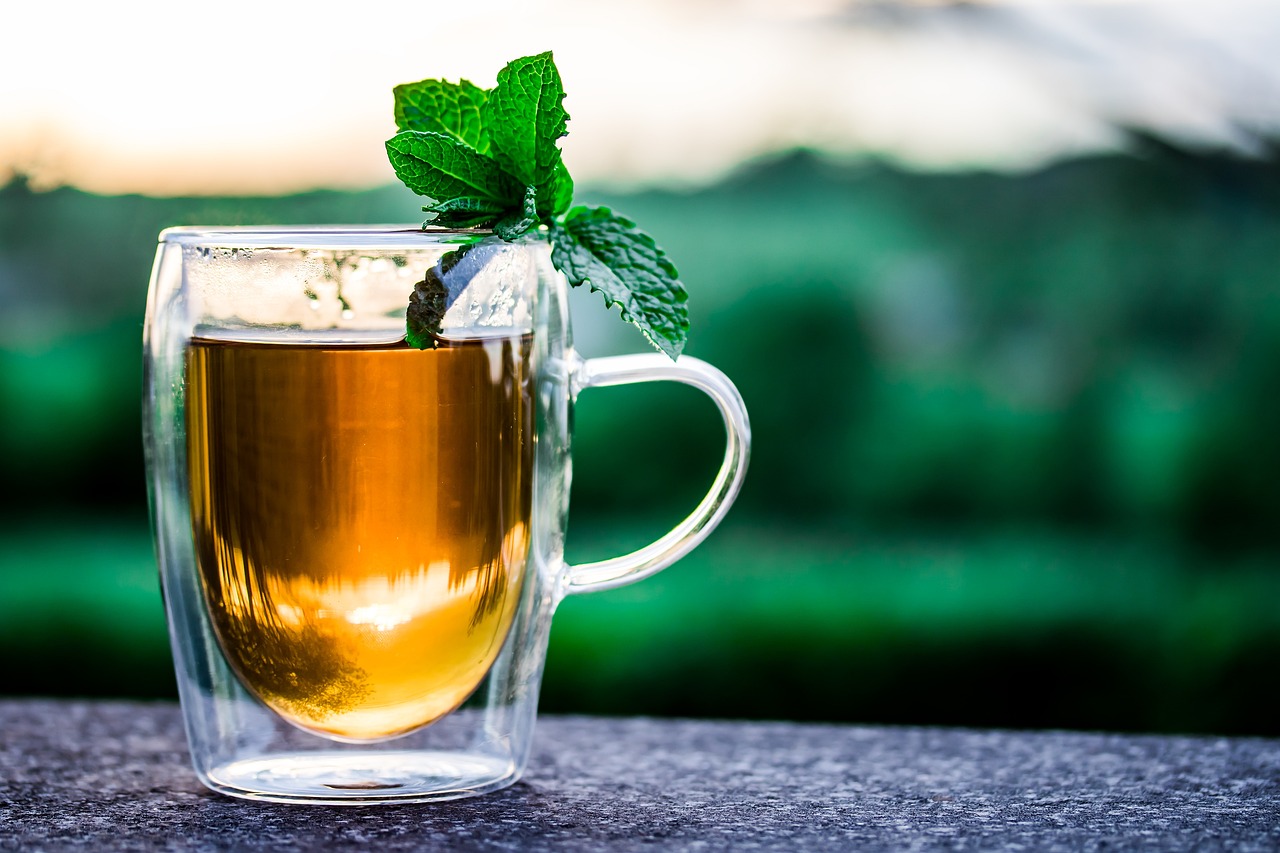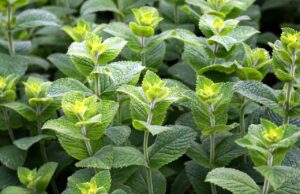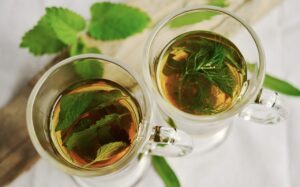Peppermint
Overview
Peppermint, or Mentha × piperita, is a widely known hybrid mint variety, produced by crossing watermint and spearmint. With its high menthol content, this aromatic herb serves both culinary and therapeutic uses, from flavoring dishes and drinks to aiding digestion and respiratory health. Though less common, some individuals have experimented with smoking dried peppermint leaves for its cooling effect and perceived relaxation benefits.
Common name(s): Peppermint
Scientific name: Mentha × piperita

Characteristics
Known for its cooling menthol aroma, digestive benefits, and use in culinary and medicinal applications.
Region
Indigenous to Europe and the Middle East, now cultivated worldwide.
Natural Habitat
Peppermint can be found in moist, shaded locations such as stream banks and drainage ditches.
Cultivation
Prefers full to partial sun, moist soil with good drainage, and regular watering without waterlogging.
Traditional Usage
Peppermint has a storied tradition in culinary and aromatic applications. It’s favored for its vibrant, fresh flavor and invigorating scent, making it a staple in both kitchens and natural wellness practices. Here are some of the notable traditional uses of peppermint:
- Fresh peppermint leaves add a zesty kick to a variety of dishes.
- Dried peppermint flowers are used to infuse flavor into candies, desserts, and beverages.
- Incorporation into salads gives a fresh burst of minty essence.
- Its aromatic properties create fragrant herbal bouquets and home scents.
As an herb that spans the boundary between flavor enhancer and medicinal plant, peppermint’s versatility continues to be celebrated worldwide2. Whether used in a home-cooked meal or as part of a natural remedy, its refreshing characteristics stand out.
Historical Usage
Used as a culinary herb, aromatic, and to flavor foods such as candy, desserts, and beverages.
Common Usage
Currently used as a flavoring in food, aromatherapy, herbal remedies, and personal care products.
Effects
Peppermint is renowned for its soothing qualities, especially when it comes to digestive health. The presence of menthol renders a cooling sensation, which aids in relaxing the gastrointestinal muscles. Moreover, it can serve as a mild anesthetic and analgesic for the nervous system.
Here are some of the general benefits you might experience with peppermint:
- Alleviates symptoms of irritable bowel syndrome (IBS)
- Reduces feelings of nausea and indigestion
- Relieves headaches
- Enhances mental function
- Provides relief from certain respiratory symptoms
Peppermint’s cooling effect is not just limited to ingestion; it’s also notable when applied to the skin or mucous membranes. While these effects are well-documented, it’s important to note that they may vary among individuals. Remember to consult a healthcare provider for personalized advice and to discuss the best ways to enjoy peppermint’s benefits for your particular needs3.

Soothing to the digestive system and offers pain relief to the nervous system while imparting a cooling effect on the skin.
Effects when smoking
When you smoke peppermint, you might experience a distinctive cooling sensation in your throat. This is largely thanks to menthol, the herb’s star compound, which is renowned for that fresh, minty essence.
- Soothing Sensation: Users often report a sense of calm and relaxation. This aligns with peppermint’s traditional use to ease digestive upsets and soothe tense muscles.
- Flavor and Aroma: Expect a strong, sweetly tinged aroma and a warming, spicy flavor that finishes with a cooling aftertaste when you smoke peppermint.
But remember, research on the safety and specific effects of smoking peppermint is somewhat limited. Always prioritize using pesticide-free and contaminant-free leaves to reduce potential risks.
Responsible Usage: There are no set guidelines for the correct dosage when it comes to smoking peppermint. For those choosing to enjoy peppermint in this way, it’s crucial to approach with caution and be mindful of personal tolerance levels.
Note: While peppermint is known for its comforting properties, smoking any plant matter can introduce harmful substances into the lungs. It’s important to consult with a healthcare provider before smoking peppermint or making any significant changes to your health regimen.
Flavor Profile
Sweedish odor, warm pungent taste, cooling aftertaste due to high menthol content
Edible Parts
Leaves and flowers
Effects when Smoked
When smoked, may produce a cooling sensation in the throat and a relaxing effect.
User Experiences
Users typically describe a refreshing, cooling sensation and enjoy its minty flavor and aroma, though smoking experiences are less common and vary.
Medicinal Benefits
Peppermint is celebrated not only for its refreshing scent and flavor but also for its range of potential medicinal benefits. This herb is often associated with soothing digestive issues and can be a natural way to address common discomforts. Taking a closer look at peppermint’s therapeutic potential:
- May alleviate symptoms of irritable bowel syndrome (IBS) such as bloating and abdominal pain.^3
- Could reduce nausea and aid in managing indigestion.
- Possibly effective in relieving headaches and enhancing mental function.
- Often used for its cooling effect which may provide relief from respiratory symptoms.
It’s worth noting that the primary active compounds, menthol, menthone, and menthyl acetate, contribute to peppermint’s signature cooling sensation and minty aroma, potentially enhancing its soothing properties. However, it is essential to consult with a healthcare provider to ensure safety and appropriate use.
History and Folklore
Historically, peppermint has had a myriad of uses beyond its culinary flair. Its leaves were cherished fresh in numerous dishes, lending a refreshing twist to meals and drinks. The dried flowers radiated their scent and taste into candies, a variety of desserts, and even in refreshing beverages. The appeal of peppermint spread through its robust aroma and dynamic flavors, accentuating salads and myriad foods with its pungent, cooling aftertaste.2
This herb’s relationship with humans has been flavored with both practical and sensory satisfaction, marking chapters of culinary and aromatic history.

Herbal infusion with peppermint, enhancing culinary traditions with its refreshing aroma and cooling taste.
Side Effects and Contraindications
While peppermint can be soothing when used in teas or topically, smoking it may carry risks. Side effects of peppermint, in general, can include heartburn, allergic reactions, and irritation of mucous membranes. The act of smoking peppermint—or any plant material—can also introduce harmful substances into the lungs.
Contraindications for peppermint primarily concern those with gastroesophageal reflux disease (GERD), as it may worsen symptoms. Additionally, individuals with a peppermint allergy or those taking certain medications should avoid its use.
Legal Status
Legal Status
Peppermint is legal across most jurisdictions and is widely available in a variety of forms. It’s commonly found as essential oils, teas, and as an ingredient in culinary recipes. No laws restrict the ownership, sale, or use of peppermint, making it a permissible herb for those interested in exploring its uses at home, including smoking for aromatic purposes. However, it is advisable to consult local regulations to ensure compliance with any regional guidelines concerning the use of herbs for inhalation3.
References
1. Wikipedia contributors. “Peppermint.” Wikipedia, The Free Encyclopedia. Wikipedia, The Free Encyclopedia, https://en.wikipedia.org/wiki/Peppermint
2. “Characteristics of peppermint plant – Botanical online.” Botanical-online. https://www.botanical-online.com/en/botany/peppermint-characteristics
3. “Peppermint | Aromatic Herb, Medicinal Uses, Fragrant Oil.” Britannica. https://www.britannica.com/plant/peppermint
Image Credit: Myriams-Fotos
Image Credit: matthiasboeckel
Image Credit: congerdesign
Nicolas Duval
Nicolas is a passionate advocate for nature and the art of wildcrafting. His dedication shines through in Wildcraftia, a website he meticulously crafted to serve as a haven for nature enthusiasts worldwide. Driven by a deep appreciation for nature’s connection to humanity, Nicolas embarked on his journey in 2011 with SmokableHerbs, a platform showcasing his love for nature’s bounty. Building upon this foundation, he established Smokably, a thriving online store offering premium herbs and blends to a global audience.
